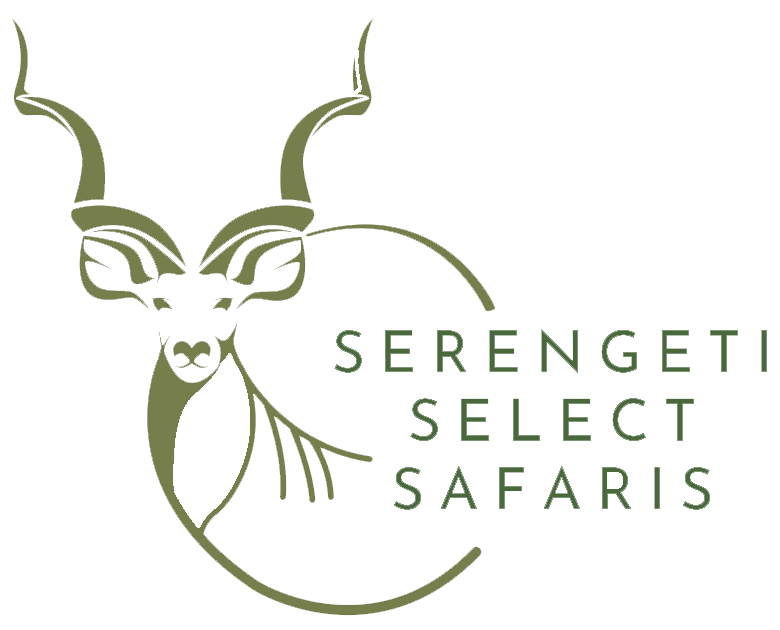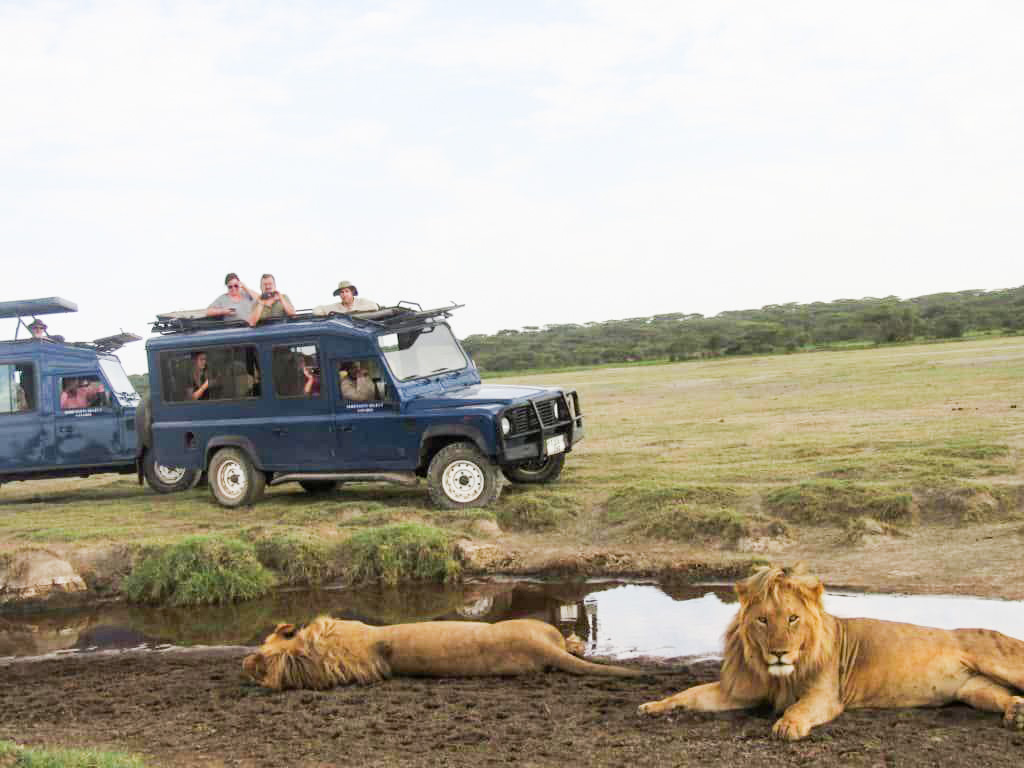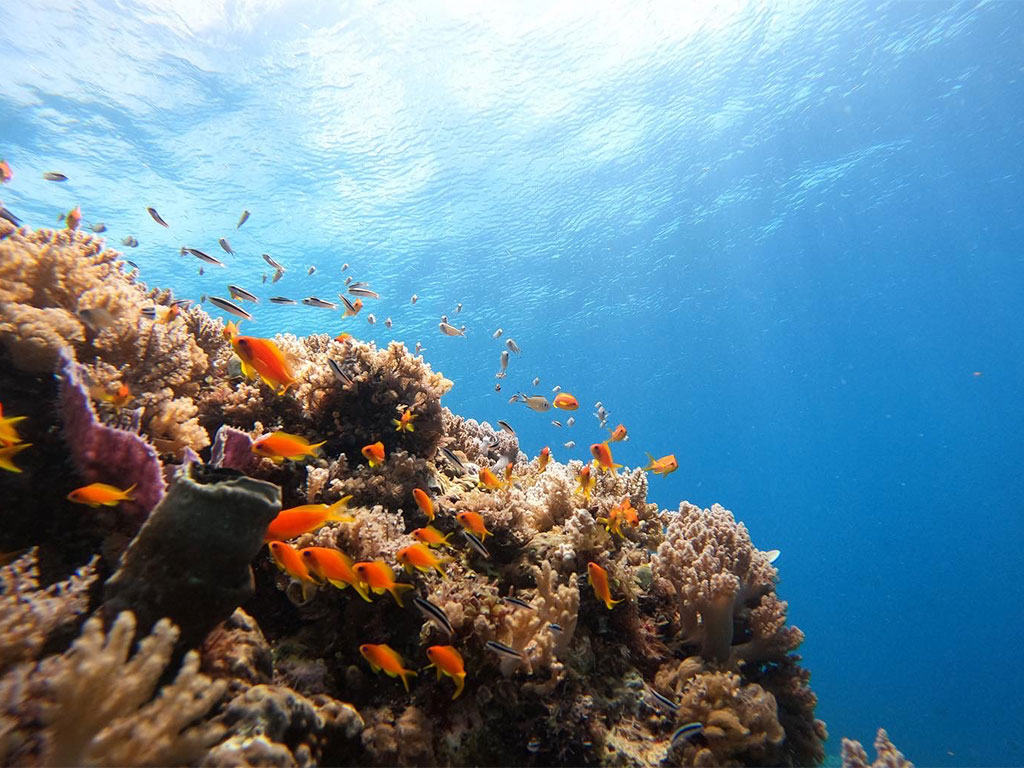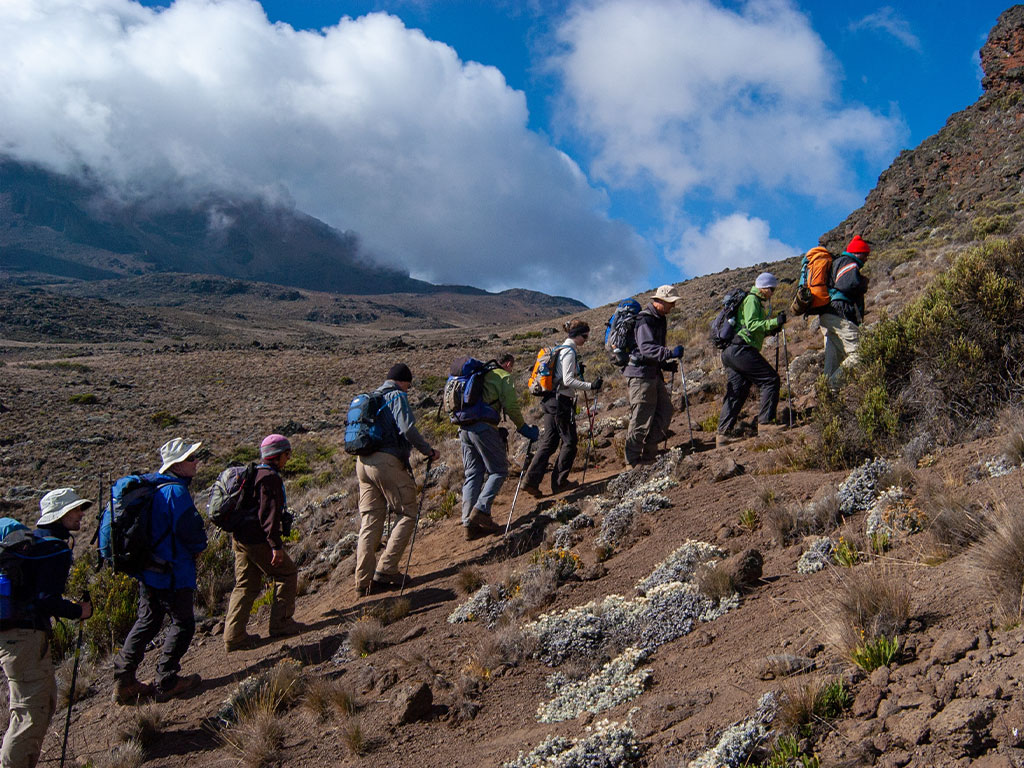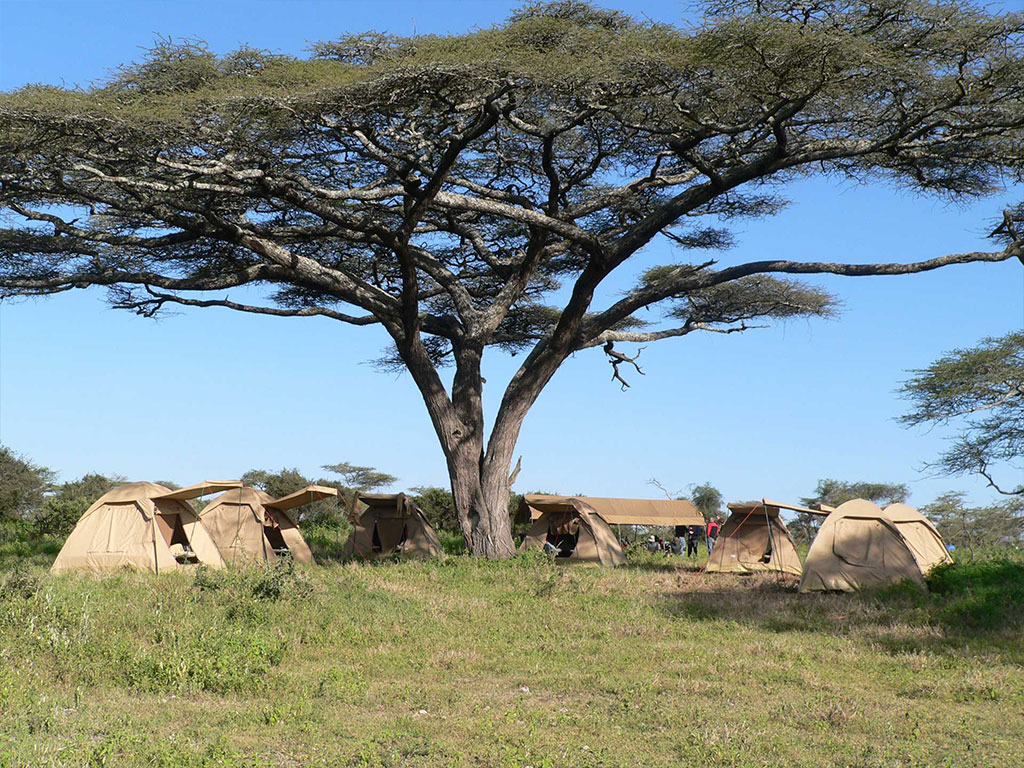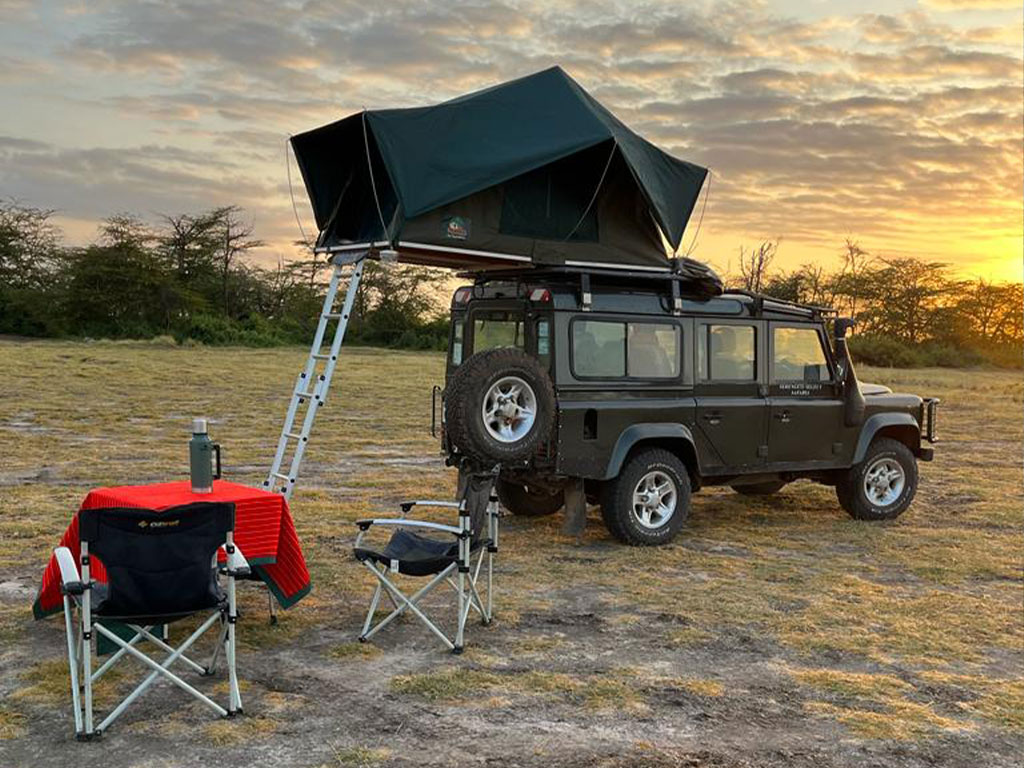Mt. Kilimanjaro Climbing
Pick the route
After breakfast, packing is completed and vehicles will take your party to the park entrance, roughly 4 miles from Marangu Hotel. Formalities over at the Park entrance you enter the rain forest for a gentle 3 hour walk to Mandara. This can be done much faster but it is the first day of your climb and there is absolutely no point in rushing it. The slower the better for the eventual success of your safari. It is worth the gentle walk to enjoy the beauty of the scenery. Whenever you feel like it you can stop for your packed lunch. Once you do reach the hut it is likely that you will have time on your hands before the evening. You may like to walk to the Maundi Crater at the upper edge of the rain forest, about half an hour’s walk from the hut, which is very pretty and from where you can obtain some lovely views. In the evening a cooked meal will be prepared in the modern and comfortable huts, lit by solar power; and the following morning you will be awoken with a cup of tea, and warm water will be provided for washing.
After a cooked breakfast you will leave Mandara at about 8 o’clock. The first half hour or so continues through the rain forest after which you emerge into alpine meadow for the approximately 10 mile walk to Horombo. If the day is clear there are splendid views to be had of both peaks and also of the plains stretching away below the mountain. The vegetation around is also spectacular, especially higher up where you might see giant lobelia. As you go higher the vegetation thins and you may experience some of the effects of altitude, commonly shortness of breath.
Rest and acclimatize
After breakfast start the climb to Kibo Hut. At this stage you are closer to Mawenzi than to Kibo, and the climb appears to be taking you to the wrong peak. There is a more direct route to Kibo which the porters use, but it is not advisable on the ascent, as the route you will follow will assist in a more gradual acclimatisation, and there is the added advantage of spectacular views of Mawenzi from just under the peak. Until you reach the saddle the terrain is very similar to the previous day; once on the saddle which resembles semi-desert, you can see clearly across to Kibo Hut which seems scarcely any distance away but is in fact some few hours walk. Again, take this slowly in order to acclimatise. The last half hour to the hut can be very tiring as the hut is some way up the peak, and the sight of the next day’s path can be pretty daunting, but most people recover some strength after a few hours rest.
You will be woken shortly after midnight with a hot drink, and then you put on all your warm clothing. The first part of the ascent to the Hans Meyer cave is quite indirect, going around large rock outcrops and it is not as steep as the latter part. The surface is loose and hard going and it is very important to pace yourself. After the cave the scree slope becomes extremely steep and you have to climb in a zig-zag fashion. It takes an average of 6 hours to cover the 4 miles from Kibo Hut to Gillman’s Point on the crater rim. If you are lucky you will see a fiery sunrise from behind Mawenzi. Gillman’s Point, at 18,635 feet is acknowledged to be the top and you will receive a certificate from the Park authorities for reaching it. From here, there are splendid views of the ice cliffs across the crater. After a rest, if you feel able, if weather and time permit, and, most importantly, if your guide says it is possible, you can attempt to reach Uhuru Peak around the crater rim. This is about another one and a half to two hours’ walk. If you reach Uhuru you will get a different, gold, certificate, and the satisfaction of having reached the roof of Africa! The descent that follows is, in some ways, as difficult as the ascent. You will be tired, and the slope has lost none of its steepness. Back at Kibo Hut you will have a rest, take off a lot of your warm clothing which will be packed into your kit bags. The you will continue to Horombo Hut, this time by the more direct route. This is a long and tiring day and you will be sure to sleep well.
Today you complete the trip back to the Park Gate, still going slowly so as not to sprain an ankle nor twist a knee. At the Gate vehicles will be waiting to take you back to the hotel to the luxury of a hot bath and a cold beer.
Landrovers take climbers to the gate at 1800 metres at the entrance to the forest. From here, a 5 to 6 hour walk, gradually ascending through the forest to a ridge between two streams and then onwards to the camp which is just clear of the forest at 3000 metres.
Walk up a steep ridge from Machame camp through moorland to about 3600 metres, heading straight towards the peak. Then, after about 4 hours, the path turns left, flattening out into a gorge and ascending more gradually to Shira camp (3840 metres) on the Shira plateau to the west of Kibo. Total time is about 5-6 hours.
The path continues directly up the ridge towards Kibo. After about 4 hours, the path forks to the right and descends into a gorge (barranco) and the night is spent at Barranco camp (3950 metres). Total time about 5-6 hours.
Cross the Barranco valley, climb the Barranco wall (not technical climbing), then follow the Kibo South Circuit. Wonderful views are to be had of Kibo’s southern glaciers if the weather is clear. Lunch next to the river in the Karanga valley, and then camp further up the opposite valley wall. Total time about 3 to 4 hours.
Complete the climb out of the Karanga valley, then bear left and climb up a ridge for about 2 hours to Barafu camp (4600 metres). Total time about 3 hours.
Leave hut at 1 or 2am. Steep climb over scree and rock towards the Rebmann Glacier, pass a cliff and then enter the gap between the Rebmann and Ratzel glaciers, arriving at the crater rim near Stella point. (About 6-7 hours). 1 more hour to Uhuru. Descend via Barafu hut (1-2 hours from Stella point) and then continue for another 3 or 4 hours to Mweka camp.
End of arrangements.
Highest Point in Africa
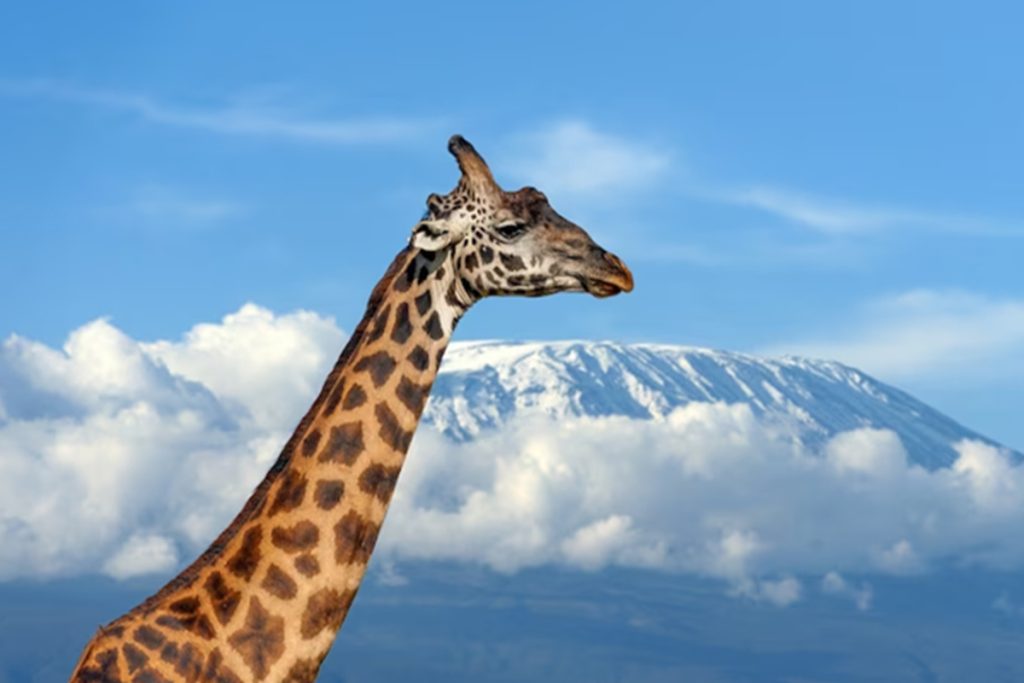
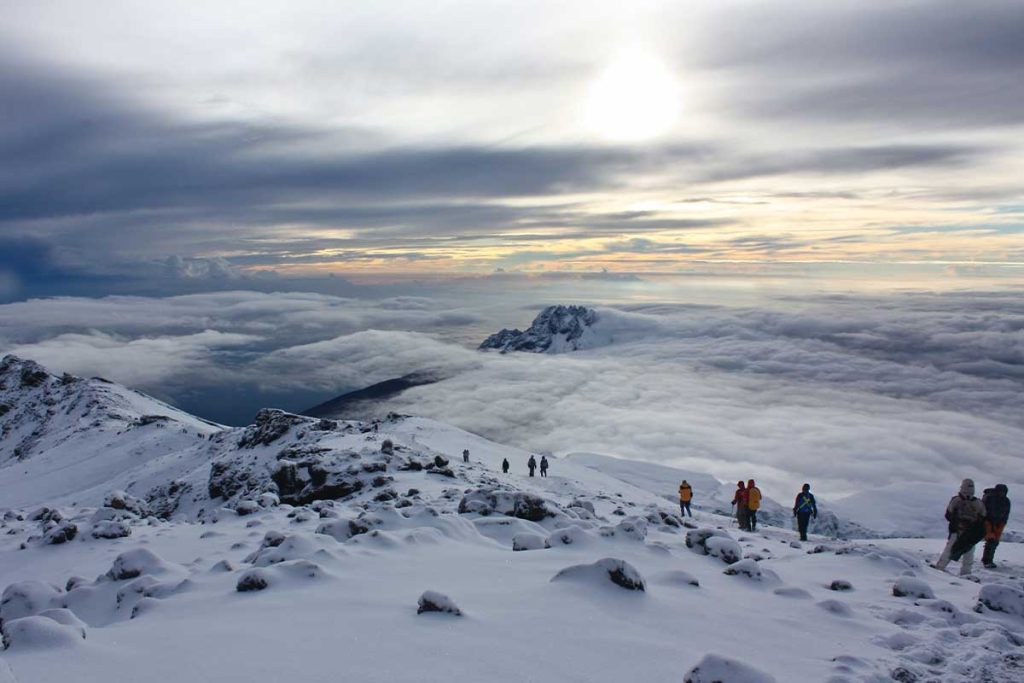
Request a Mountain & Trekking Trip
You may also like.
Plan an Unforgettable Adventure in
Tanzania Today.
We try keep our prices reasonable so the whole family can enjoy.

